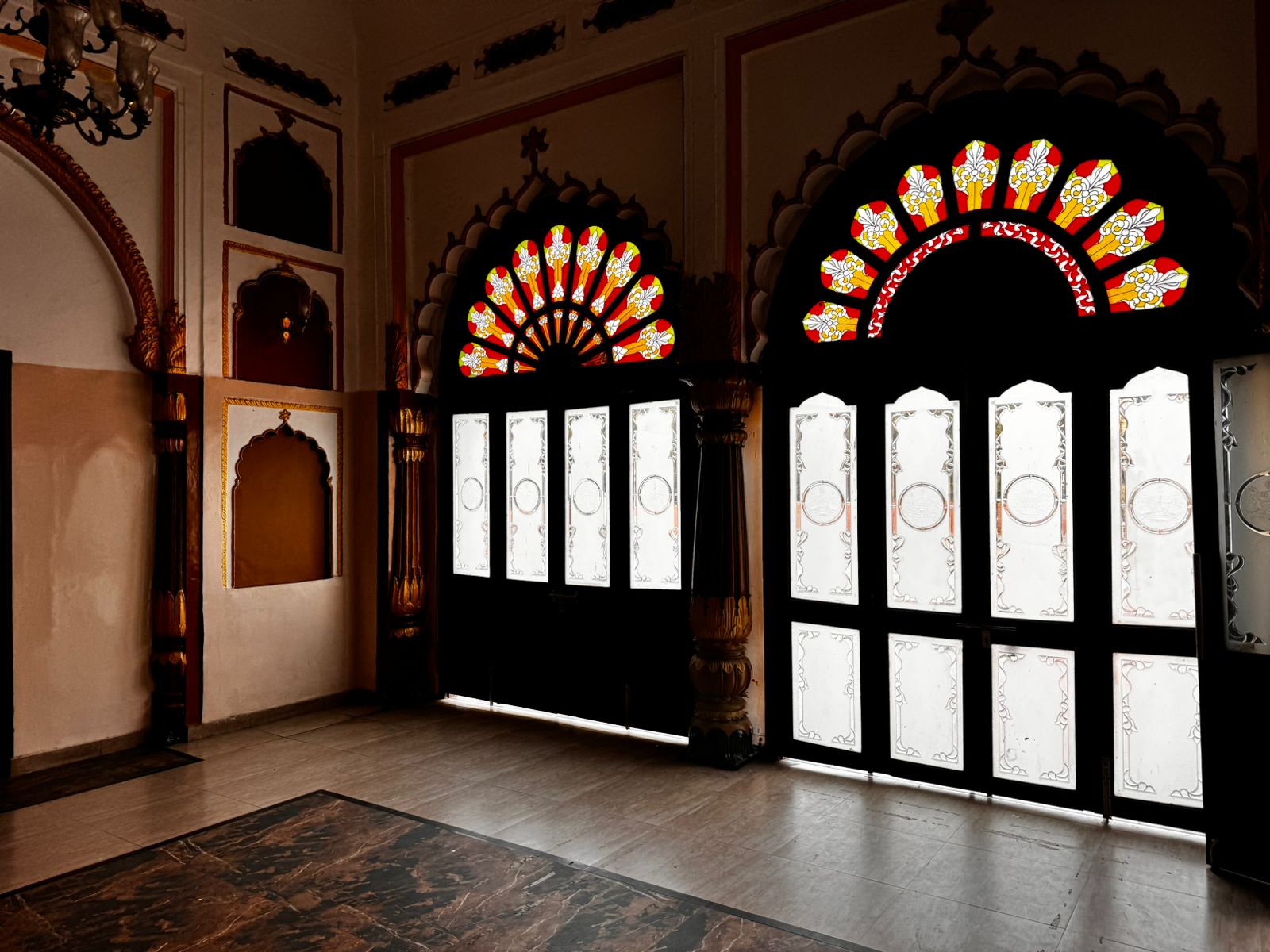My Ayodhya leg was over, and we decided to move to Lucknow. It was best to take the Vande Bharat Express back to Lucknow. This was a pleasant experience I have been enjoying train rides after a long time and I like the new train system the trains are modern and very comfortable. The journey back to Lucknow was of about two hours.
This time I decided to stay in another hotel, and we duly found one near suburb area for two thousand a night. I was keen to see some ancient buildings where Mujara’s took place, and which was a heritage building. The auto driver took us straight to Safed Baradari this is a large marble building which some wonderful interior which have some great acoustics. This was a place where the Nawab’s and the kings used to have their musical concerts, and the courtesans would dance for the kings and the nobles. It was a place of music poetry painting and culture. The interiors are marvels, especially the colorful glass used on the windows and doors of the palace, the chandeliers are opulent and large and there are balconies all around on the top where people could sit and watch the performances. This was a place of high-class culture. I could see a large painting of Nawab Wajid Ali Shah which was beautiful and very eye catching.
The Legend of Safed Baradari
The floor area of the building is large, and its walls are well decorated with painted and colorful opaque glass, that makes the place very colorful as sunlight seeps through the doors and windows. There is a large state of Maharaja Man Singh which is a must see. There are large lamps and Jhoomer’s that adorn every corner of the Baradari. There is also a white marble statue of Digvijay Singh of Balarampur.
I did manage to strike a conversation with the local care takers who told me that now the Tawaif’s have disappeared and no Mujra’s take place in the building and that the Baradari is now sued as a marriage hall, where weddings take place. “You need to check the library next to the park, one can get many books Tehri that talk of the Tawaifs and their dance.” A caretaker advised me when I quizzed him about the history of the place.
Initially Baradari was built by Nawab Wajid Ali Shah as a place of mourning. It was used as an Imam Bara to mourn the martyrs of Karbala. After the annexation of Awadh the building was used by the British to hold court and for the kings to listen to the grievances of petitioners. The building is now under the British India Association of Awadh.





















